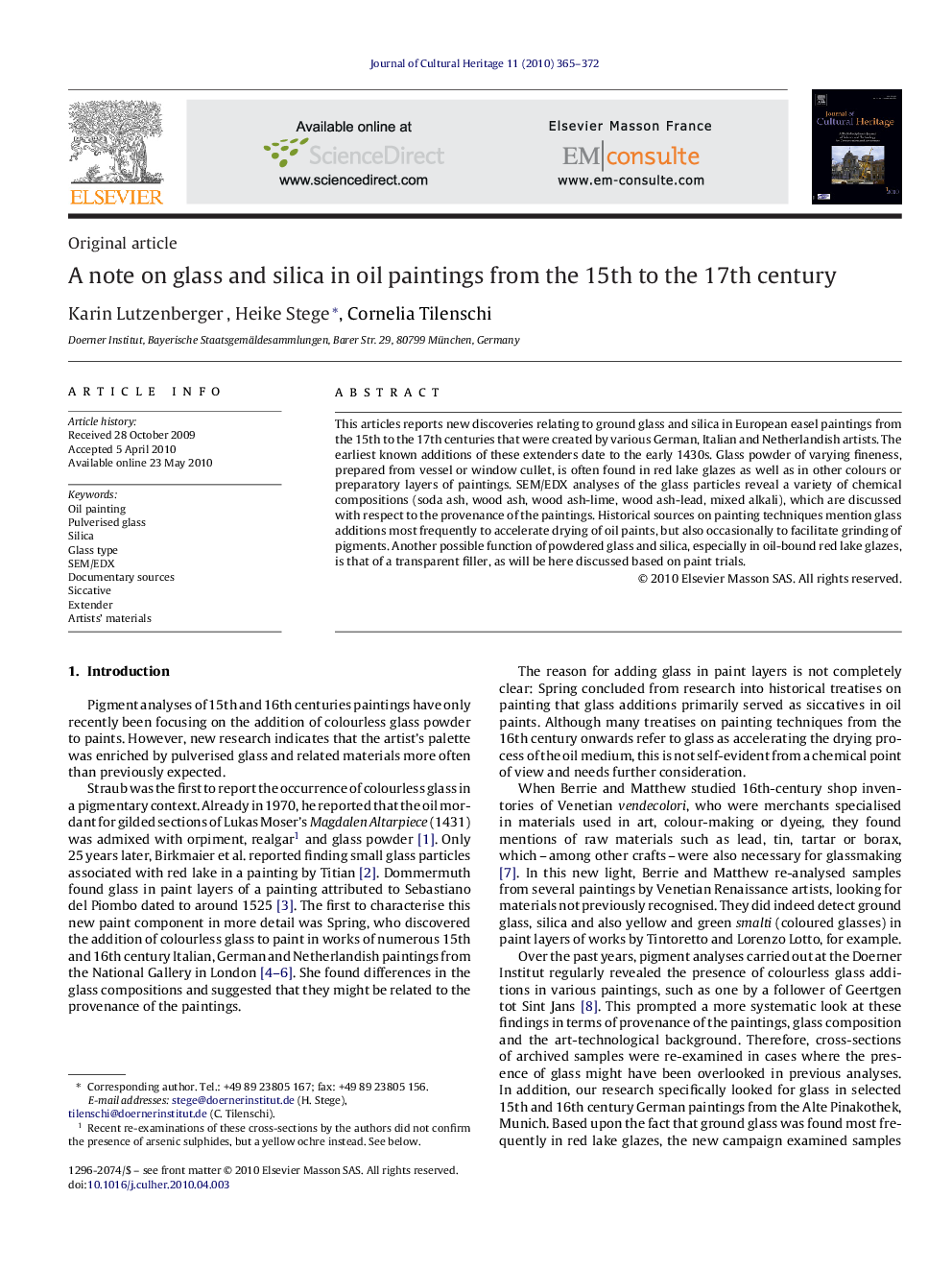| Article ID | Journal | Published Year | Pages | File Type |
|---|---|---|---|---|
| 1038555 | Journal of Cultural Heritage | 2010 | 8 Pages |
This articles reports new discoveries relating to ground glass and silica in European easel paintings from the 15th to the 17th centuries that were created by various German, Italian and Netherlandish artists. The earliest known additions of these extenders date to the early 1430s. Glass powder of varying fineness, prepared from vessel or window cullet, is often found in red lake glazes as well as in other colours or preparatory layers of paintings. SEM/EDX analyses of the glass particles reveal a variety of chemical compositions (soda ash, wood ash, wood ash-lime, wood ash-lead, mixed alkali), which are discussed with respect to the provenance of the paintings. Historical sources on painting techniques mention glass additions most frequently to accelerate drying of oil paints, but also occasionally to facilitate grinding of pigments. Another possible function of powdered glass and silica, especially in oil-bound red lake glazes, is that of a transparent filler, as will be here discussed based on paint trials.
